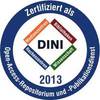Preview |
PDF, English
Download (29MB) | Terms of use |
Abstract
Das in vielen (inter-)nationalen Stechmückenbekämpfungsprogrammen eingesetzte Biozid Bacillus thuringiensis israelensis (Bti) steht immer wieder im Verdacht (sub-)letale Schäden bei Nichtzielorganismen der Chironomidae (Zuckmücken) hervorzurufen. Das Hauptziel der vorliegenden Arbeit war es daher, das Risiko einer Bti-Applikation für Chironomiden in der aquatisch-terrestrischen Grenzzone abzuschätzen.
Dazu wurde eine Übersicht über die bisherige Datenlage erstellt und insgesamt 59 verschiedene Studien zur Wirkung von Bti auf Chironomiden ausgewertet. Dabei zeigte sich, dass viele Chironomidenarten, insbesondere aus der Unterfamilie Chironominae, durch Bti in freilandüblichen Konzentrationen (> 90 ITU/L Bti) negativ beeinflusst werden können. Dies zeigte sich sowohl in den ausgewerteten Bioassay- als auch in den Labor-/Mesokosmos-Studien deutlicher als in den referierten Freilandstudien.
Basierend auf den gewonnenen Daten wurde in Bioassay-Experimenten die arttypische Sensitivität der Erstlarven von Chironomus riparius, Chironomus dorsalis und Chironomus aprilinus mithilfe der modifizierten OECD TG 235 bestimmt und eine ökotoxikologische Risikoabschätzung durchgeführt. Es konnte gezeigt werden, dass alle Erstlarven der untersuchten Chironomidenarten bei Bti-Konzentrationen, wie sie üblicherweise in Stechmücken-Kontrollprogrammen eingesetzt werden, unter Laborbedingungen geschädigt werden.
Zusätzlich wurden zwei In-situ-Studien durchgeführt. Im Rahmen der ersten In-situ-Studie wurde die Dipterenzönose in zwei Naturschutzgebieten der Oberrheinaue mithilfe von Emergenzfallen erfasst und mit Referenzdaten aus den Jahren 1995 bis 1997 verglichen. Die Ergebnisse zeigen, dass, großräumig betrachtet, keine auffälligen Veränderungen der Dipterenabundanz und -diversität im Untersuchungszeitraum der Studie zu verzeichnen waren, während kleinräumige Veränderungen auf natürliche Einflussfaktoren zurückzuführen waren. Die zweite In-situ-Studie untersuchte den direkten Effekt einer Bti-Applikation auf Chironomidenlarven. Zu diesem Zweck wurde die potenzielle Schädigung von Chironomidenlarven durch zweifache Bti-Applikation im Freiland überprüft. Dabei konnte selbst in den Überlappungszonen von Culiciden- und Chironomidenhabitaten keine nachhaltige Schädigung der Chironomidenpopulation durch Bti-Applikation nachgewiesen werden. Sollte es zu (sub-)letalen Schädigungen gekommen sein, war die Chironomidenzönose in der Lage, diese zu kompensieren. Darüber hinaus konnte keine Verdriftung des Biozids aus dem Anwendungsgebiet in angrenzende Stillgewässer beobachtet werden.
Ergänzend hierzu wurde im Rahmen der zweiten In-situ-Studie ein taxonomischer Methodenvergleich (Bestimmung mittels morphologischer Merkmale, Sanger-Sequenzierung und Metabarcoding) zur Bestimmung der Chironomidenlarven durchgeführt. Dabei wurde deutlich, dass sowohl die morphologischen als auch die molekularen Bestimmungsmethoden bei ausschließlicher Anwendung Schwächen bezüglich der Nachweistiefe aufweisen, sodass ein integrativer Ansatz zur Bestimmung von Chironomiden empfehlenswert ist.
Translation of abstract (English)
The biocide Bacillus thuringiensis israelensis (Bti), used in many (inter)national mosquito control programmes, is suspected to have (sub-)lethal effects on non-target organisms of the Chironomidae. Therefore, the main objective of the present study was to assess the risk of Bti application to chironomids in the aquatic-terrestrial transition zone. For this purpose, the available scientific data were reviewed and a total of 59 different studies on the effects of Bti on chironomids were analysed. The results showed that a large number of chironomid species, in particular those belonging to the subfamily Chironominae, can be negatively affected by Bti at concentrations commonly used in the field (> 90 ITU/L Bti). This was more evident in the bioassay and laboratory/mesocosm studies than in the reported field studies.
Based on the data obtained, the species-specific sensitivity of first instar larvae of Chironomus riparius, Ch. dorsalis and Ch. aprilinus was determined in bioassay experiments using the modified OECD TG 235 and an ecotoxicological risk assessment was performed. It was shown that all first instar larvae of the chironomid species studied are affected under laboratory conditions at Bti concentrations commonly used in mosquito control programmes. In addition, two field studies were conducted. In the first in situ study, the dipteran community in two nature reserves in the Upper Rhine valley was recorded using emergence traps and compared with reference data from 1995 to 1997. The results show that there have been no remarkable large-scale changes in dipteran abundance and diversity over the last decades, while smaller-scale changes can be attributed to natural and climatic factors. The second in situ study investigated the direct effect of Bti application on chironomid larvae. The potential damage to chironomid larvae caused by two Bti applications in the field was investigated. Although a partial overlap of culicid and chironomid habitats was observed in the small-scale and fluctuating mosaic of temporary aquatic habitats, no lasting damage to the chironomid population by Bti application could be detected.
If (sub-)lethal damage had occurred, the population was able to compensate for it. Furthermore, no drift of the biocide from the application site to the surrounding stagnant water was observed.
In addition, the second in situ study compared taxonomic methods (morphological identification, sanger sequencing and metabarcoding) commonly used to identify chironomid larvae. Both morphological and molecular identification methods were found to have weaknesses in terms of detection reliability when used exclusively. Therefore, an integrative approach to chironomid identification is recommended.
| Document type: | Dissertation |
|---|---|
| Supervisor: | Braunbeck, Prof. Dr. Thomas |
| Place of Publication: | Heidelberg |
| Date of thesis defense: | 1 July 2024 |
| Date Deposited: | 11 Oct 2024 06:51 |
| Date: | 2024 |
| Faculties / Institutes: | The Faculty of Bio Sciences > Dean's Office of the Faculty of Bio Sciences |
| DDC-classification: | 570 Life sciences 590 Zoological sciences |









